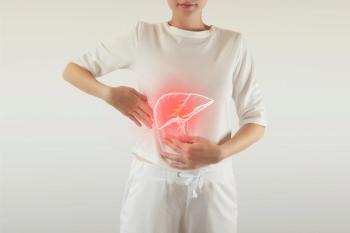
Dilated, fixed pupil and headache in a young girl
A 9-year-old girl is being admitted to the pediatric intensive care unit because of headache and a dilated, fixed left pupil. The girl has a history of pseudotumor cerebri and Chlarimalformation type I.
Key Points
The Case
You receive a phone call from the emergency department (ED) physician informing you that a 9-year-old girl is being admitted to the pediatric intensive care unit (PICU) because of headache and a dilated, fixed left pupil. The ED doctor says that the patient is awake, talking, and moving everything except her left eye and eyelid. The doctor also states that the girl has a history of pseudotumor cerebri and Chiari malformation type I.
The girl's vital signs on admission to the ED were: temperature, 37° C; heart rate (HR), 69 beats per minute; respiratory rate (RR), 16 breaths per minute; blood pressure (BP), 144/74 mm Hg; and oxygen saturation (SaO2), 99% in room air. Repeat BP measurements were 131/85 mm Hg 19 minutes later, 128/88 mm Hg 36 minutes later, and 127/83 mm Hg 42 minutes later. In addition, the ED doctor says that the girl has a slow and irregular heart rate for a child that age, along with widened QRS complexes. An irregular heartbeat might be of concern because the heart rate and rhythm may deteriorate. Nonetheless, she's awake and moving. Because of the frightening combination of a cranial nerve abnormality and the abnormal vital signs, which may cause an observer to worry about an intracranial emergency such as increased pressure, a tumor, or an infection, the ED physician treated her with 28 g intravenous (IV) mannitol and 1.45 g IV ceftriaxone and, 30 minutes later, with 10 mg IV dexamethasone. You are informed that even before the patient has left the ED for the PICU, her left pupil and eyelid have returned to normal appearance and function.
When you see the patient in the PICU 90 minutes after her arrival in the ED, her left pupil and eyelid are indeed normal, and as you were told, she's awake, talking appropriately, and has complete mobility. Her vital signs in the PICU are: temperature, 38.1° C; HR, 81 beats per minute; RR, 20 breaths per minute; SaO2, 100% in room air; and BP, 127/58 mm Hg (95th percentile for systolic and diastolic BP for a girl of her height percentile is 115/76). She weighs 28 kg (30th percentile), her height is 129.5 cm (18th percentile), and she has a body mass index of 16.42 kg/m2 (53rd percentile).
Funduscopic exam is normal, including no papilledema. Her neurologic examination is also normal. She can just barely lift her head from the pillow because of sore muscles over the back of her neck, and she complains that the back of her neck is tender when an examiner tries to lift it. You note that in the ED examiner's report her neck is described as "rigid and painful with attempted flexion." Heart, lung, and bowel sounds are normal, the chest is clear, the abdomen is soft, and there's no hepatosplenomegaly. Pulses are normal in strength, although they're somewhat slow and irregular, capillary filling is normal, and her arms, legs, and back are normal. When her hips are flexed, she can straighten her legs without difficulty. She is a bit weak in general, and she has normal and symmetrical strength, sensation, and cranial nerve function. She is awake, alert, and appropriately oriented.
A leg rash was seen in the ED, but you observe no rash now.Seconds later, a pink, splotchy, nonpalpable, blanching rash begins to appear over her lower abdomen and upper thighs-and then just as quickly it begins to disappear. At this point, the patient tells you that when her headache worsens, the rash appears, and when the headache subsides, the rash goes away.
Recent history
Her very recent history, as reported by her parents, is noteworthy for a 2-week period of intermittent headache and neck ache; however, between these episodes, she felt fine. Her parents also say that yesterday she developed nausea, headache, vomiting, and fever (temperature, 38.3° C) in the morning. They tell you that her headache continued until this morning, and then early this afternoon she developed a blotchy rash on her inner thighs that lasted only a few minutes. In the middle of the afternoon, during an intense headache, her left eyelid and left side of her face became droopy, and they took her to the ED.
Diagnostic dilemma
At this point, you're given results from her blood test, which was performed in the ED after she received treatment. The results were: white blood cells (WBC),33,300/µL, with 74% segmented neutrophils and 15% band forms; hemoglobin, 14.5 g/dL; platelets, 396,000/µL; sodium, 133 mEq/L; potassium,3.1 mEq/L; chloride, 96 mEq/L; total CO2, 13 mEq/L; blood urea nitrogen, 14 mg/dL; creatinine, 0.5 mg/dL; and glucose, 211 mg/dL. A blood gas sample wasn't drawn, but her low total CO2, elevated anion gap of 24 mEq/L, and high blood sugar level lead you to question whether this girl, who already has 2 known diagnoses, may perhaps have a third: diabetic ketoacidosis (DKA). Is the hyperglycemia a reaction to stress and/or dexamethasone? Also, how do you explain the acidosis? She certainly doesn't appear to be in shock or underperfused.
The patient is now stable, but she continues to show signs of increased intracranial pressure (ICP), such as periodic cranial nerve dysfunction, hypertension, and borderline bradycardia. Her symptoms call to mind the kind of condition Dr Harvey Cushing described when observing progressive brainstem ischemia because of supratentorial lesions. The Cushing response consists of systemic hypertension because of sympathetic stimulation, bradycardia because of vagal stimulation, and respiratory depression or cessation because of ischemia of the medulla.2 Your patient is showing systemic hypertension and bradycardia, and you worry that respiratory depression or cessation may not be far behind.
You begin to review the 3 diagnoses on your short list. One of the most alarming aspects of DKA is cerebral edema, so it is important to look at the brain radiographically. Treatment for DKA is volume resuscitation, electrolyte replenishment, and insulin administration, but if cerebral edema is present in a patient with DKA, osmotic diuresis would be considered a priority.3 The elevated blood sugar occurred before dexamethasone was given. It was a single venipuncture measurement, not a finger stick bedside measurement, and it wasn't confirmed before the scan was done. A defining feature of pseudotumor cerebri is intracranial hypertension; other features include elevated ICP without an intracranial mass and normal cerebral ventricles and normal cerebrospinal fluid (CSF).4 Treatment for pseudotumor cerebri consists of decreasing the amount of CSF by lumbar puncture (LP) to decrease the elevated pressure, administering acetazolamide, or, if medical treatment is ineffective, performing a surgical procedure such as ventriculoperitoneal shunt, lumboperitoneal shunt, or optic nerve fenestration, the 3 main surgical procedures in this case.5
Chiari malformation can cause headache and hydrocephalus, but it is not likely to cause increased ICP in the absence of hydrocephalus.6 Treatment for this condition is observation, pain relief, and at times, surgical decompression. A brain scan can determine whether there is acute hydrocephalus. A computed tomography (CT) scan of the patient's head shows the Chiari malformation, but ventricular size is normal. There's no evidence of cerebral edema, and there are no focal abnormalities such as tumor or bleeding. Other than the Chiari malformation, the scan is normal, as it was when performed 2 months earlier. This indicates that cerebral edema and acute worsening of the Chiari malformation are unlikely. It would be helpful to analyze the CSF; however, you have some concerns about performing an LP in the presence of increased ICP.
Newsletter
Access practical, evidence-based guidance to support better care for our youngest patients. Join our email list for the latest clinical updates.














